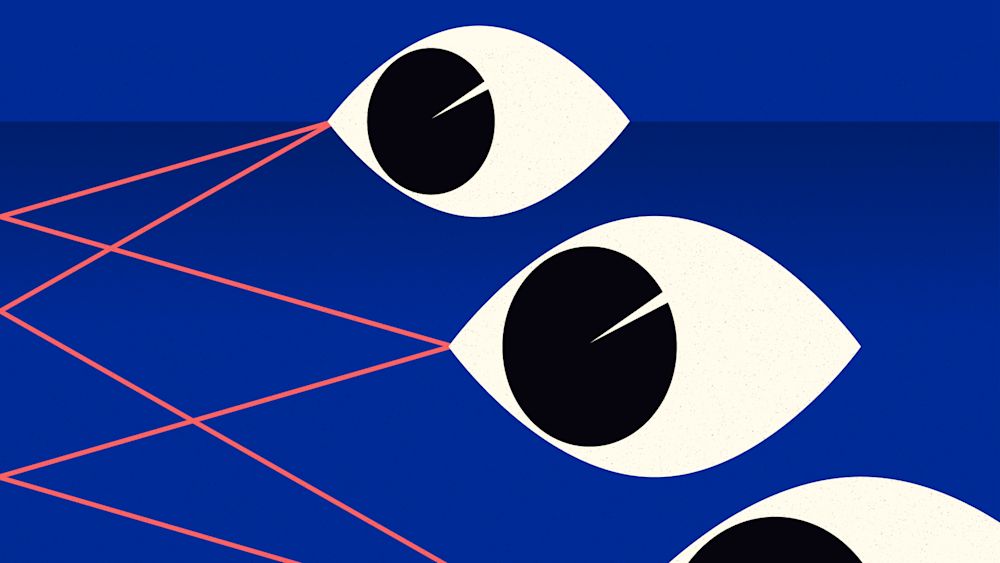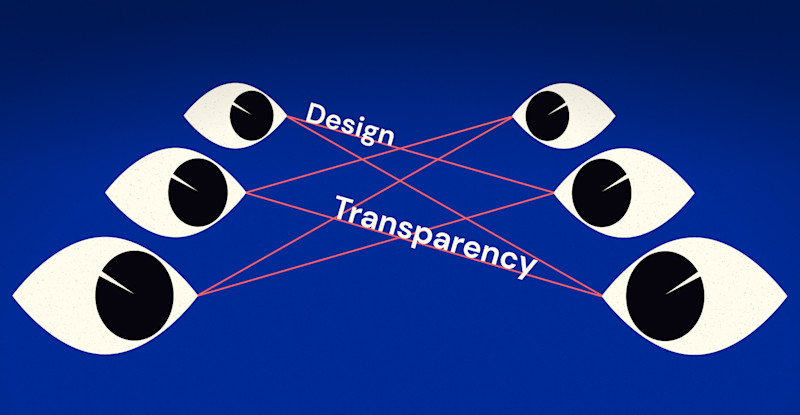How Transparency Helps us Become Better Designers
Table of contents
For designers transparency is about being open and sharing work frequently and early. It’s about receiving feedback before you are certain you’re going in the right direction. It’s about being transparent about your process, sharing how you work, and why you work that way.

*Andrew Denty is a Senior Product Designer at The Org. He's also worked in senior design roles at Danish tech startup Airtame, and Redgate in Cambridge, UK, where he led the development of Redgate’s Design System. *
--
Transparency has never been so important in design
I’m not talking about transparency effects in Photoshop, but about the fundamentals of how we work as designers.
For designers transparency is about being open and sharing work frequently and early. It’s about receiving feedback before you are certain you’re going in the right direction. It’s about being transparent about your process, sharing how you work, and why you work that way.
The design team at The Org is committed to being transparent by default. After all, we are a company founded on a vision of espousing the benefits of organizational transparency.
In this article I’m going to share five of our learnings from adopting a transparent design process.
1. Get valuable feedback earlier
As designers feedback is crucial for making sure we’re designing the right thing at the right time. How else will we know if a design meets our users’ needs? Are there any technical limitations, blockers, or other unknowns that we should design around?
By being transparent with ongoing design work and using tools like Figma, we ensure work is shared early and often. Stakeholders can open a mock-up at any stage of the design process, and sharing progress is as simple as copying and sharing a link.
For example, this week I worked on a concept which would allow our Researchers to make notes about their work. I started sharing ideas before I even had any wireframes. The Researchers loved one approach in particular. It seemed straightforward and definitely met their needs. There was one problem though, the approach would require a large amount of development time, something we couldn’t justify for this feature. By being open and sharing the work early in a public channel, I was able to get really early feedback from the development team and we are now working on a solution which will be much faster to implement, but that still meets the needs of our researchers.
Working this way helps us learn important things sooner. We’re often able to avoid time wasting dead ends and alter design direction sooner based on early feedback from colleagues.
2. Transparency strengthens teamwork
Adopting a transparent design process has transformed the way our design team works with other functions at The Org. So far, being open has removed almost all of the friction in sharing and handing over designs.
For example, by the time we’re ready to hand over designs to the development team, they’re already up to speed with the feature as they’ve had access to the designs from the very beginning. Tools such as Figma, Invision and Zeplin also allow us to include all of the information developers need like CSS values and animations in the designs we share.
What’s more if a colleague needs to share a prototype or design process either internally or externally they can simply jump into the design, get what they need and continue with their work.
Finally, the passive sharing of design helps colleagues stay up to date with the progress of design work so that there are no unexpected delays or surprises.
3. Transparency is ethical
As designers we spend much of our time conducting research, often with people outside our organizations.
Often there’s a temptation to hide the true goals of your research from participants and tell them the absolute minimum about the product you’re designing. This often isn’t the best approach though.
IDEO’s recent book of stresses the importance of being “truthful and timely in communication” and doing your best not to mislead, or leave participants with false impressions.
Being transparent with our research goals gives us integrity as designers and also gives participants more context about the problems we’re trying to solve. Consequently by being transparent, it often encourages research participants to be more open and engage more fully with the research.
4. Transparency helps spread good ideas faster
Transparency helps good ideas spread faster because they’re visible. For example if you’re designing a new UI component as part of a project, it can be shared by colleagues working on other projects much faster if they’re able to see your in-progress design work.
You can also more easily identify areas where you can work more closely with other teams and avoid building the same thing twice within walled gardens. Design systems in products like Figma, Invision and Sketch make this process much faster. They enable you to jointly develop components in your design system, meaning your fellow designers can experiment with and improve new components and patterns at the same time as you.

5. Transparency makes us more efficient
I can’t count the number of times I’ve lost a file or spent hours looking for someone’s most up-to-date design.
At the Org, my colleague Alex and I keep all of our product designs in a shared Figma Project. We are careful to ensure we name files clearly and include thumbnails which help us easily identify work. All of the work that isn’t yet ready to be built is kept in a “Playground” project. Everyone has access to the Playground, but keeping work here makes it clear it’s not yet finished. Although this requires a little discipline, working this way makes us far more efficient.
Working this way also has the additional benefits of it being easier for colleagues to find past design work, and also understand why design decisions were made by looking at the notes and comments. Oh, and it also (hopefully) helps us avoid the same mistakes twice.
Are there downsides to working transparently?
While many people are at ease working openly, it is uncomfortable for others.
When I first adopted Figma in my previous role at Airtame, I have to admit I was a little uneasy about sharing very early concepts before they had the chance to fully form.
It’s unnerving at first to see someone else’s mouse pointer dancing around your canvas as you work. I was fearful my ideas would be prematurely crushed. I was also afraid that this would be used for micromanagement - to check how much progress I was making on a minute-by-minute basis.
However neither of these things happened. What I have found is that by being explicit that you’re sharing early work, the feedback and ideas you’ll get are constructive and useful. And in the rare cases where the feedback boils down to “we’re headed in the wrong direction”, I’d much rather learn this sooner than later.
If you’re planning to encourage your design team to work more transparently, be candid with them, and explain that initially it can feel a little awkward, but that you’re open to talking through any concerns. If your team struggles to embrace transparency, it may be worth checking out some of the tips in Patrick Lencioni’s excellent book, . Teams are much more able to be open and transparent with each other when they have high levels of trust, are open to healthy conflict and are committed to shared goals.
While a transparent design culture can take some adjusting to, in my experience the initial awkwardness quickly dissipates and it ultimately leads to more open, trusting relationships with your colleagues.
Join us in the future we are building
As our design team grows you can expect Alex and I to share more and more publicly. We hope to share our design system, early ideas for new features and work well before it’s ready for primetime.
In my next post I’ll share a collection of tools, techniques and practices that you can use to help you and your design team reap the benefits of increased transparency.
I hope this post has helped you understand the benefits of design transparency. I for one am feeling energized by what this new era of increasingly transparent design will enable us to do.
--
The Org is a professional community where companies can show off their team to the world. Join your company here to add yourself to the org chart!


The ¬Ð¿Ú¬“¬◊ helps
you hire great
candidates
Free to use – try today